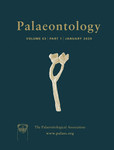Reg. Charity No. 1168330

The avian digestive system, like other aspects of avian biology, is highly modified relative to other reptiles. Together these modifications have imparted the great success of Neornithes, the most diverse clade of amniotes alive today. It is important to understand when and how aspects of the modern avian digestive system evolved among neornithine ancestors in order to elucidate the evolutionary success of this important clade and to understand the biology of stem birds and their closest dinosaurian relatives: Mesozoic Paraves. Although direct preservation of the soft tissue of the digestive system has not yet been reported, ingested remains and their anatomical location preserved in articulated fossils hint at the structure of the digestive system and its abilities. Almost all data concerning direct evidence of diet in Paraves comes from either the Upper Jurassic Yanliao Biota or the Lower Cretaceous Jehol Biota, both of which are known from deposits in north‐eastern China. Here, the sum of the data gleaned from the thousands of exceptionally well‐preserved fossils of paravians is interpreted with regards to the structure and evolution of the highly modified avian digestive system and feeding apparatus. This information suggests intrinsic differences between closely related stem lineages implying either strong homoplasy or that diet in each lineage of non‐ornithuromorph birds was highly specialized. Regardless, modern digestive capabilities appear to be limited to the Ornithuromorpha, although the complete set of derived feeding related characters is restricted to the Neornithes.